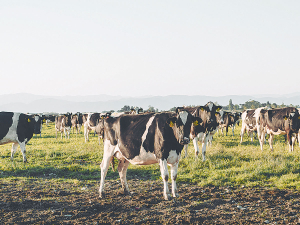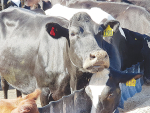Ensuring autumn calvers are receiving a balanced ration of macro and micro minerals will go a long way to setting them up for a successful season.
Animal health company Agvance says energy demands for cows’ peak as they transition from pregnancy to lactation.
“If your calvers are lacking in vital nutrients, vitamins, and minerals in the lead up to autumn calving, their health and performance for the rest of the season can be seriously affected. This can also affect the future health and performance of the calves.
“A successful autumn transition means the cow will come into lactation with better rumen performance, lowering the risk of metabolic disease and increasing the likelihood of a healthy calf.
“The transition and early lactation period for autumn calvers require a diet high in calcium, magnesium, and phosphorous, as well as trace elements. Rumen buffers are useful in stabilising rumen pH over this time.”
The cow’s digestive system must be transitioned to a level where she can digest as much good quality feed as possible during this time to in order to maintain condition, produce milk, and drive the hormones required over the coming months to become pregnant again.
Agvance’s range of mineral supplementation for autumn calving has been scientifically developed and proven to ensure your autumn calvers are getting the best macro and micro minerals for this critical period.
A lot of research has shown the key trace elements involved to be cobalt, copper, iron, manganese, selenium, and zinc. But how do these trace elements interact within the body to culminate in better reproductive performance?
Cobalt
Cobalt aids in the cow’s ability to make vitamin B12, which in turn improves energy balance. Studies have shown that fluctuations of B12 serum around calving time can have negative effects of subsequent reproductive performance.
Copper
Copper has been shown to not only promote regular luteal activity (the second half of the cow’s cycle), but also positively impact ovum viability and early embryogenesis (the first eight weeks post-fertilisation). It’s important to note, however, that studies show copper toxicity will decrease energy production and increase the incidence of apoptosis.
Iron
Research shows iron supplementation plays a part in embryogenesis and better embryo quality, but may be ineffectual in the earlier stage of ovum development. While iron has its benefits in supplementation, the levels must be monitored to not interfere with copper, manganese, selenium, and zinc.
Manganese
Manganese has been shown to increase pregnancy rates, enhance ovum development, and embryo viability, with positive impacts carrying on through early embryogenesis. On the flipside, manganese deficiency has been linked to increased incidence of silent heat, lower conception rates, increased abortion rates, lower birth weights, and a higher rate of male calves.
Selenium
Selenium has been shown to have positive impacts on follicle activity and protecting against cell damage as the ovum develops.
Zinc
Research shows higher levels of zinc are linked with regular luteal activity, higher pregnancy rates, higher levels of zinc have a positive impact on regular luteal activity, improved pregnancy rates, better embryo quality, and reduced time between calving and first estrus. Agvance says ensuring that your herd is receiving high-quality mineral and trace element supplementation at the correct ratio is a proven way to optimise their chances of getting in-calf and staying in-calf.
“Liver biopsies will give you an accurate assessment of your animals’ mineral stores, which your vet can perform. They’ll also be able to help you determine the right mineral supplementation programme.”


















